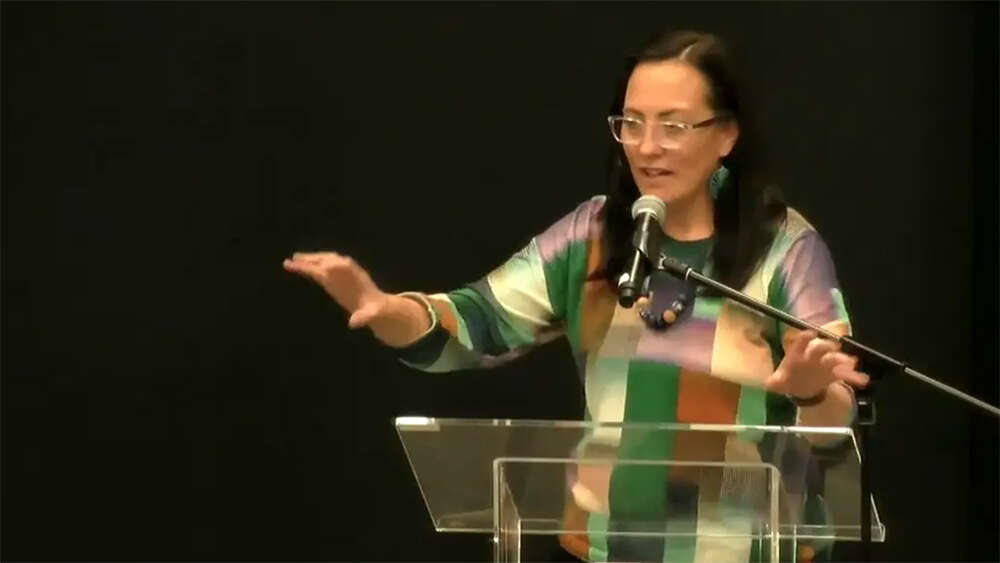This might be the cultural moment for small churches. So said Bree Mills, in the annual Tinsley Lecture at the Sydney campus of Morling College. Her topic: Micro Churches: Remembering the Past to Shape the Future.
Mills, the Senior Associate Pastor at Glen Waverley Anglican Church, was drawing on her experience in launching a network of missional communities around the Eastern suburbs of Melbourne.
“There’s been a cultural movement back towards supporting the local,” Mills said. “And I think this is fed from both climate concerns and, and the impact of travel and things like that … But in its essence, it’s about choosing to invest locally. Now, I believe this has always been the case in Australia to varying degrees. I think the success of the local pub and the local milk bar, do you have milk bars – in New South Wales corner stores, right? … A lot of cafes are starting to become local hubs selling things from local sellers during co COVID lockdowns, particularly in Melbourne. But I think broadly in Australia, this shift to live and engage more locally, I think has been accelerated.”
This trend fits with microchurches defined as “adaptable, lightweight, and lay-led communities that live out their missional identity in a particular network or neighbourhood”.
Mills’ second cultural shift is part of what causes the first: “an increased desire and awareness of our need for both connection and belonging.” She references social psychologist and author Hugh Mackay’s belief that community provides emotional security and moral guidance.
Younger people can find community at work, and some church members want more of it at church.
“I’ve spoken to a few larger church pastors who have reported to me since COVID a significant number of people moving away from their larger church expression that they used to drive towards and seeking something more local in a couple of cases.”
Mills labels a third shift as “decentralisation'”, a growing lack of trust in large organisations, and the rise of a personalised economy.
“As a larger organisation, as an institution, the church has lost the trust of people in Australia. That’s the reality we’ve gotta deal with. And I think, you know, perhaps rightly so, right, leadership failures, tribalism, high boundaries on complex theological issues have caused people to just walk away from the church as an institution or an organisation.”
Finally, she describes the impact of authors David Bosch and Lesslie Newbigin’s concept of Missio Dei – that of mission not just as an activity but the heart of church life. “There’s been increased focus on discipleship in many churches on justice ministries and on the equipping of all believers for works of service.”
A microchurch is not just a traditional church that has shrunk. Michael Frost, the founder of the Tinsley Institute, a mission study centre located at Morling College in Sydney, clarifies for Eternity.
The NSW Baptists use the term “Simple churches”, Frost explained, which “have no paid staff or property. They usually consist of a relatively small number of members, though often have a significantly larger number of nonmembers connected to their community. They are highly relational and flexible in their structures and approach. They can exist everywhere and anywhere, being based around a variety of coalescing factors such as a particular area, a workplace, a community group, a theme or purpose, a project or interest.”
This “simple church” model is an alternative to other forms of church planting that begin with full or part-time staff.
“The NSW Baptist definition comes from this document in which we argue for a diversity of models of Baptist congregations operating in a blended ecology, with simple churches as one of the models we want to foster,” Frost tells Eternity. The NSW/ACT Baptists are seeking to grow “to become a movement of 1000 Healthy Churches by 2050.”
Mills turns to how the Bible uses the word “ecclesia” often translated as “church.” “Ecclesia” in scripture is often used to refer to both larger public gatherings, such as those in Solomans ADE, as well as household gatherings, such as those that meet at Priscilla and Aquila’s house (Acts 2 46,). Mills emphasises that both approaches were held together in the early church where believers met in the temple courts and in their homes.
“Paul speaks in the same sort of language of ministry in Acts 20. And he speaks about teaching in public and from house to house. I think Paul’s letter to the Corinthians demonstrates that these households come together at times for larger gatherings. Now, while we may be tempted to see in this a typical church and a small group network in these two structures, I think Paul is pretty clear that both of these spaces are places of teaching and of mission in Acts 5:42.
“He says day after day in the temple courts and from house to house, they never stopped teaching and proclaiming the good news that Jesus is the Messiah. Now stories like Cornelius demonstrate that the household was where many actually came to faith.”
Giving encouragement, Mills describes how movements like the Moravians seeded revival through small gatherings, encouraging John Wesley to do the same in Britain. Before he grew a congregation, Wesley started by forming small groups called class meetings. Bree points to historian Howard Snyder’s account of how the class meetings led to revival across that nation as well.
Could it be that going small is the way to getting big?
Email This Story
Why not send this to a friend?




